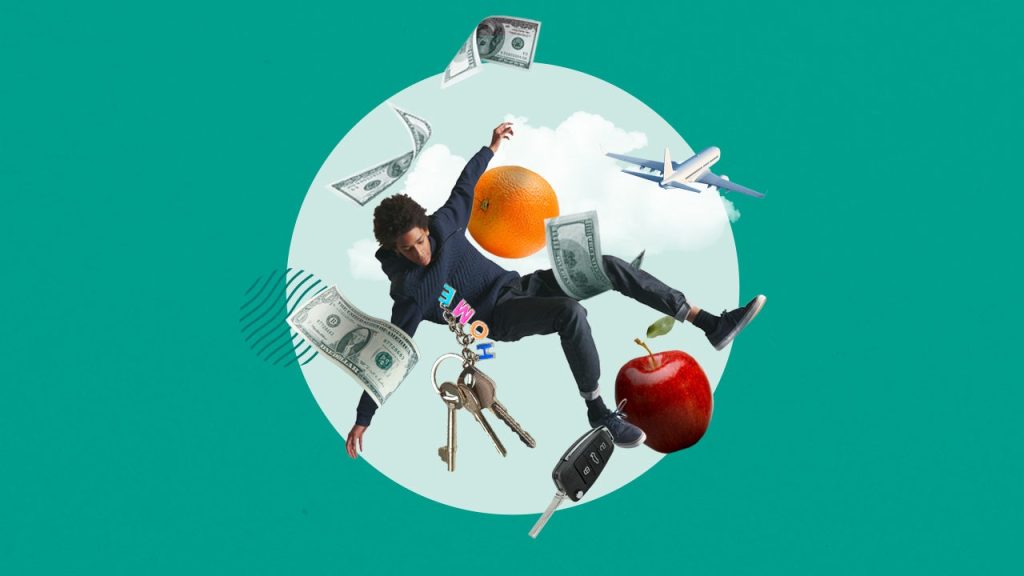As the dust settles from the pandemic-induced economic upheaval, a new challenge is quietly embedding itself into the Federal Reserve’s policy calculus: services inflation. Once a predictable and manageable element in the inflationary equation, services are now behaving unpredictably, staying elevated even as goods inflation declines. This lingering inflation is reshaping how economists, investors, and policymakers interpret inflationary pressures—and it may be the most stubborn obstacle yet on the Fed’s path toward price stability.
A Tale of Two Inflations: Goods vs. Services
To understand the complexity of today’s inflationary landscape, one must first distinguish between goods and services. Goods inflation—think cars, electronics, food, and fuel—spiked dramatically in 2021 and 2022 due to supply chain bottlenecks, global shipping gridlock, and pent-up consumer demand post-COVID. But over time, these pressures have eased. Shipping costs fell, inventories normalized, and demand rebalanced. Consequently, goods inflation cooled.
Services inflation, by contrast, has proven stickier. Core services—especially those excluding energy and housing—have remained hot. This includes healthcare, insurance, education, hospitality, transportation, and personal care. These are sectors where price-setting is heavily influenced by labor costs, localized supply-demand dynamics, and regulatory factors. In other words, they are insulated from global deflationary forces that help moderate goods prices.
Labor Market Dynamics: The Core Driver of Services Inflation
At the heart of services inflation lies the labor market. Unlike manufacturing, which can rely on automation or overseas outsourcing, services often require human capital. A nurse, teacher, or hotel receptionist cannot be replaced by a robot or imported from a lower-cost jurisdiction. And with labor markets in the U.S. still relatively tight—unemployment hovering near historic lows—wages have been climbing.
This wage growth is critical. When wages increase in service sectors, businesses often pass those costs to consumers. Unlike temporary supply shocks in goods, wage-induced inflation in services tends to be structural and persistent. It doesn’t just go away when global trade rebalances. As such, services inflation may take years—not months—to normalize, barring a significant labor market weakening.
Wage Growth and Productivity Misalignment
Complicating the picture is the disconnect between wage growth and productivity. Ideally, wage gains are offset by productivity improvements, allowing businesses to pay more without raising prices. But in many service industries—especially those relying on face-to-face interaction—productivity gains are inherently limited. A nurse or hair stylist cannot see double the clients in half the time without compromising care or service quality. Thus, higher wages often translate directly into higher prices for consumers.
The Fed’s Dilemma: Wait or Cut?
This evolving inflation landscape has put the Fed in a bind. On one hand, headline inflation has improved, with goods inflation and housing-related inflation softening. On the other, the “supercore” inflation—services excluding volatile components—is proving resistant to policy tightening.
In June 2025, the Fed held rates steady, leaving its policy rate in the 5.25%–5.5% range. Markets were split over whether rate cuts might arrive before year-end. Some dovish voices, pointing to slower retail sales, tepid hiring, and credit tightening, argue that monetary policy is already restrictive enough. Others urge caution, citing the persistence of services inflation and the risk of undermining credibility if cuts are premature.
Tom Barkin, President of the Richmond Fed, likened today’s economy to “driving in fog.” While the vehicle (the economy) may be slowing, visibility is poor. Policy missteps—whether over-tightening or easing too early—could be costly.
Tariffs: A New Inflationary Headwind?
Adding another wrinkle to the Fed’s policy puzzle are new tariffs on Chinese goods and components, reintroduced under a second Trump administration. While tariffs predominantly affect goods, their second-order effects can bleed into services. If tariffs raise costs for businesses across the supply chain, from tech to transport, those costs can be passed on in everything from data plans to delivery fees.
Alberto Musalem, President of the St. Louis Fed, noted the risk of tariffs producing “inflation bursts.” If businesses believe tariffs are temporary, they may absorb the costs. But if they anticipate long-term protectionism, they will likely adjust prices—and wages—upward. This behavior would feed into the services sector, further entrenching inflation.

Political Pressure vs. Central Bank Independence
Political interference remains a shadow looming over the Fed. President Trump has repeatedly called for aggressive rate cuts, citing the need to stimulate investment and strengthen the dollar. However, economists warn that such pressure could lead to policy errors. If the Fed cuts too soon and reignites inflation, it may be forced to re-tighten later, jolting markets and damaging credibility.
Fortunately, Fed Chair Jerome Powell has reiterated the central bank’s independence. “We’re not here to win popularity contests,” he stated at the June post-meeting press conference. “We’re here to manage the economy with prudence, data, and discipline.”
Market Implications: Rates, Stocks, and the Services Trade
From an investor’s lens, persistent services inflation suggests a prolonged higher-for-longer interest rate regime. That’s bad news for rate-sensitive sectors like technology and real estate. But it also reshuffles winners and losers in the services-heavy S&P 500. Companies with pricing power in services—healthcare insurers, education providers, luxury hospitality—may outperform, while labor-intensive businesses with weak margins could struggle.
Bond markets may also remain volatile. If inflation expectations remain elevated, long-duration bonds could suffer, and Treasury yields may stay stubbornly high. TIPS (Treasury Inflation-Protected Securities) and short-duration bonds may gain favor in this environment.
For global investors, the divergence between U.S. goods and services inflation is instructive. Economies with larger service sectors (like the U.S. and U.K.) may face prolonged inflation bouts compared to more goods-centric economies like Germany or South Korea.
A New Inflation Playbook for Investors
Given the structural nature of services inflation, investors may need to rethink their inflation hedging strategies. Traditional tools like gold, commodities, and TIPS remain relevant, but equity positioning should also evolve.
Consider these strategic ideas:
- Overweight sectors with services pricing power: think managed care (UNH), education tech (CHGG), and hospitality (HLT).
- Avoid highly labor-intensive, low-margin industries such as restaurants, unless they have strong automation initiatives.
- Focus on quality: companies with clean balance sheets and high return on invested capital (ROIC) are better equipped to manage rising input costs.
- Don’t assume rate cuts are guaranteed: position portfolios with an eye toward a Fed that stays hawkish longer than expected.
Conclusion: The Real Battle Has Just Begun
While the inflationary surges of 2021 and 2022 have largely dissipated from the goods economy, the real battle now lies in the more stubborn, domestic arena of services. For the Fed, this means treading carefully, armed with patience and data. For investors, it means shifting focus toward the less visible but deeply embedded forces shaping the post-pandemic economy. Services inflation isn’t just a thorn in the Fed’s side—it may be the defining monetary challenge of the decade.














































